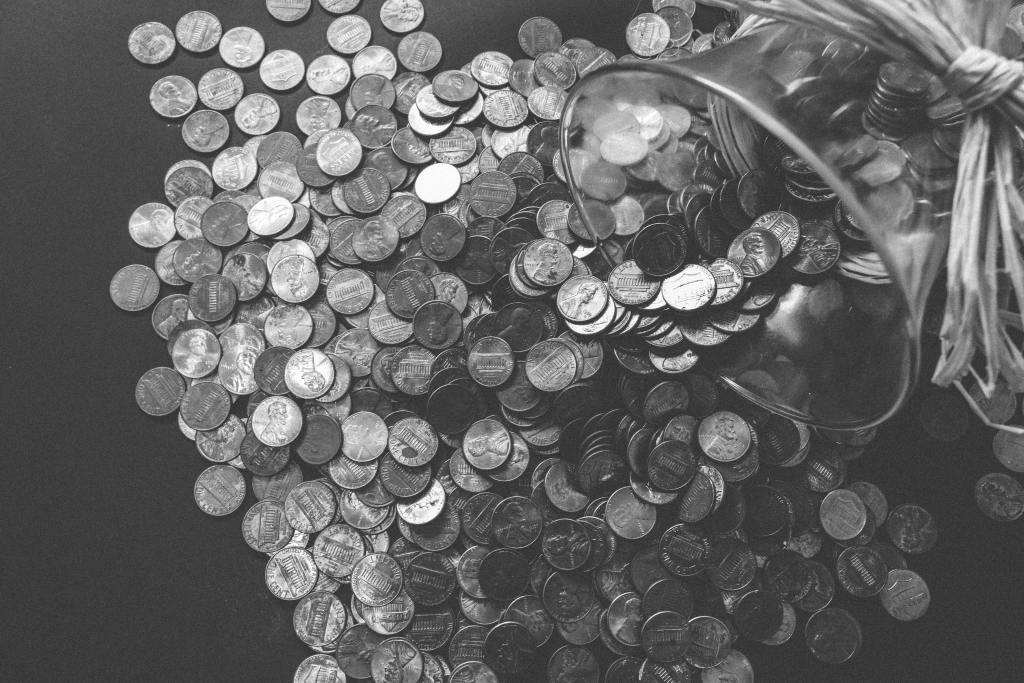KPA Lawyers – August 20, 2017

Bankruptcy is a process governed by the Bankruptcy and Insolvency Act (BIA). Any insolvent person who has no other way to meet his or her financial obligations may file for bankruptcy, unless they have not been discharged from a previous bankruptcy.
In a bankruptcy, people or companies (“debtor”) who can no longer pay their debts give all of their non-exempt property to a Licensed Insolvency Trustee (LIT) who then sells it and distributes the money to creditors. Bankruptcy can be voluntary or forced by a creditor through the Courts.
Roughly 90 percent of bankruptcies in Canada are consumer bankruptcies where the business-related debts make up less than 50 percent of the bankrupt’s total debts.
When the bankrupt’s realizable assets do not exceed $15,000, the bankruptcy is processed under summary administration. Almost all consumer bankruptcies are processed this way.
Bankruptcies processed as summary administrations are simpler; for example, they don’t require a meeting of creditors. If your debtor’s bankruptcy is to be handled as a summary administration, you will find a notation saying so near the top of the documents you receive.
As soon as the debtor is declared bankrupt, creditors can no longer launch or continue legal proceedings against the debtor without the Court’s permission.
If you are a secured creditor, however, you can take possession of your security unless the Court, under certain conditions, orders otherwise. For example, a bank holding a security on a car may take possession of the car and sell it even if the debtor has declared bankruptcy.
Proof of Claim form
After a bankruptcy has been filed, the LIT will send you a notice of bankruptcy as well as a list of creditors and the amounts of their claims.
The LIT will also send a Proof of Claim form. You must fill out this form to share in the dividends and vote at the first meeting of creditors (if one is held). The form contains the name of the creditor and the bankrupt, the nature and amount of the claim, as well as other information. A list of instructions is usually included. You must attach a Statement of Account providing the details of the claim along with supporting documents or other evidence that establishes the validity of your claim.
If you are an unsecured creditor and you want to vote at the first meeting of creditors, you must file your completed form with the LIT before the meeting of creditors. Before the first meeting of creditors, the LIT will examine the Proof of Claim and decide whether your claim, in whole or in part, is accepted or disallowed. If your Proof of Claim is disallowed, you have 30 days to appeal the decision to the Court.
If you are a secured creditor, you do not have to fill out a Proof of Claim form unless the LIT asks you to or if you want to vote at the meeting of creditors and obtain a dividend for the unsecured portion of your claim.
If you want to vote at a meeting of creditors but are unable to attend, you may appoint another person to vote on your behalf. To do this, fill out a proxy form and return it to the LIT along with your Proof of Claim, or give the form to your proxy to present to the chairperson of the meeting at any time before the vote is taken.
What is a Discharge?
Under certain circumstances, the process for discharging the bankrupt begins with the LIT issuing a report on the bankrupt’s application for discharge. The report must analyze:
- the affairs of the bankrupt;
- the causes of the bankruptcy;
- the manner in which the bankrupt has performed his or her duties;
- the bankrupt’s conduct before and during the bankruptcy;
- whether the bankrupt has been convicted of any offence under the Bankruptcy and Insolvency Act (sections 198–208); and
- any other fact that would justify the Court’s refusal of the discharge.
The main effect of discharge is to release the bankrupt from all non-exempt debts. Such debts include orders to compensate an assault victim, Court-ordered fines, claims by a former spouse or common-law partner for child support or alimony and student loans.
A discharged bankrupt can once again get credit, purchase property and sign contracts.
A debtor whose discharge is not opposed by the Office of the Superintendent of Bankruptcy (OSB), the LIT or a creditor, and who has not refused or neglected to receive counselling, is automatically discharged after 9, 21, 24 or 36 months, depending on whether it is a first or second bankruptcy. The discharge also depends on whether or not the bankrupt is required to pay a portion of his or her surplus income into the bankruptcy estate per the standard established by the OSB.
As a creditor, you have the right to oppose the discharge of a bankrupt. If you oppose the discharge on grounds other than those mentioned in the LIT’s report, you must notify the LIT and the bankrupt of your opposition and grounds. In that event, the bankrupt will not be discharged automatically and the grounds for the opposition will be heard by the Court.
A creditor who opposes the discharge of the bankrupt must prove the facts on which his or her opposition is based. In other words, it is not enough simply to allege the reasons for the opposition; the creditor must also give the Court evidence in support of these arguments.
If it is not the debtor’s first or second bankruptcy, or if a creditor, LIT or the OSB is opposing the discharge, the LIT must apply to the Court for a hearing about the bankrupt’s discharge. The Court may grant or refuse an absolute order of discharge, suspend the operation of the order for a specified time or grant a discharge under certain conditions (a conditional discharge).
If a bankrupt is not discharged, creditors can take action to recover any debts from the bankrupt after the LIT is discharged.
What facts must be proven to oppose a discharge?
If a creditor wishes to oppose a discharge, the creditor must prove to the Court at least one of the following facts:
(a) the assets of the bankrupt are not of a value equal to fifty cents on the dollar on the amount of the bankrupt’s unsecured liabilities, unless the bankrupt satisfies the court that the fact that the assets are not of a value equal to fifty cents on the dollar on the amount of the bankrupt’s unsecured liabilities has arisen from circumstances for which the bankrupt cannot justly be held responsible;
(b) the bankrupt has omitted to keep such books of account as are usual and proper in the business carried on by the bankrupt and as sufficiently disclose the business transactions and financial position of the bankrupt within the period beginning on the day that is three years before the date of the initial bankruptcy event and ending on the date of the bankruptcy, both dates included;
(c) the bankrupt has continued to trade after becoming aware of being insolvent;
(d) the bankrupt has failed to account satisfactorily for any loss of assets or for any deficiency of assets to meet the bankrupt’s liabilities;
(e) the bankrupt has brought on, or contributed to, the bankruptcy by rash and hazardous speculations, by unjustifiable extravagance in living, by gambling or by culpable neglect of the bankrupt’s business affairs;
(f) the bankrupt has put any of the bankrupt’s creditors to unnecessary expense by a frivolous or vexatious defence to any action properly brought against the bankrupt;
(g) the bankrupt has, within the period beginning on the day that is three months before the date of the initial bankruptcy event and ending on the date of the bankruptcy, both dates included, incurred unjustifiable expense by bringing a frivolous or vexatious action;
(h) the bankrupt has, within the period beginning on the day that is three months before the date of the initial bankruptcy event and ending on the date of the bankruptcy, both dates included, when unable to pay debts as they became due, given an undue preference to any of the bankrupt’s creditors;
(i) the bankrupt has, within the period beginning on the day that is three months before the date of the initial bankruptcy event and ending on the date of the bankruptcy, both dates included, incurred liabilities in order to make the bankrupt’s assets equal to fifty cents on the dollar on the amount of the bankrupt’s unsecured liabilities;
(j) the bankrupt has on any previous occasion been bankrupt or made a proposal to creditors;
(k) the bankrupt has been guilty of any fraud or fraudulent breach of trust;
(l) the bankrupt has committed any offence under this Act or any other statute in connection with the bankrupt’s property, the bankruptcy or the proceedings thereunder;
(m) the bankrupt has failed to comply with a requirement to pay imposed under section 68;
(n) the bankrupt, if the bankrupt could have made a viable proposal, chose bankruptcy rather than a proposal to creditors as the means to resolve the indebtedness; and
(o) the bankrupt has failed to perform the duties imposed on the bankrupt under this Act or to comply with any order of the court.
Are there any types of debts that survive beyond bankruptcy?
Yes. An order of discharge does not release the bankrupt from:
- (a) any fine, penalty, restitution order or other order similar in nature to a fine, penalty or restitution order, imposed by a court in respect of an offence, or any debt arising out of a recognizance or bail;
- (a.1) any award of damages by a court in civil proceedings in respect of
- (i) bodily harm intentionally inflicted, or sexual assault, or
- (ii) wrongful death resulting therefrom;
- (b) any debt or liability for alimony or alimentary pension;
- (c) any debt or liability arising under a judicial decision establishing affiliation or respecting support or maintenance, or under an agreement for maintenance and support of a spouse, former spouse, former common-law partner or child living apart from the bankrupt;
- (d) any debt or liability arising out of fraud, embezzlement, misappropriation or defalcation while acting in a fiduciary capacity or, in the Province of Quebec, as a trustee or administrator of the property of others;
- (e) any debt or liability resulting from obtaining property or services by false pretences or fraudulent misrepresentation, other than a debt or liability that arises from an equity claim;
- (f) liability for the dividend that a creditor would have been entitled to receive on any provable claim not disclosed to the trustee, unless the creditor had notice or knowledge of the bankruptcy and failed to take reasonable action to prove his claim;
- (g) any debt or obligation in respect of a loan made under the Canada Student Loans Act, the Canada Student Financial Assistance Act or any enactment of a province that provides for loans or guarantees of loans to students where the date of bankruptcy of the bankrupt occurred
- (i) before the date on which the bankrupt ceased to be a full- or part-time student, as the case may be, under the applicable Act or enactment, or
- (ii) within seven years after the date on which the bankrupt ceased to be a full- or part-time student;
- (g.1) any debt or obligation in respect of a loan made under the Apprentice Loans Act where the date of bankruptcy of the bankrupt occurred
- (i) before the date on which the bankrupt ceased, under that Act, to be an eligible apprentice within the meaning of that Act, or
- (ii) within seven years after the date on which the bankrupt ceased to be an eligible apprentice; or
- (h) any debt for interest owed in relation to an amount referred to in any of paragraphs (a) to (g.1).
#bankrupty #opposedischarge #WhatisaDischarge #securedcreditor #unsecuredcreditor #ProofofClaim #BankruptcyandInsolvencyAct #summaryadministration



